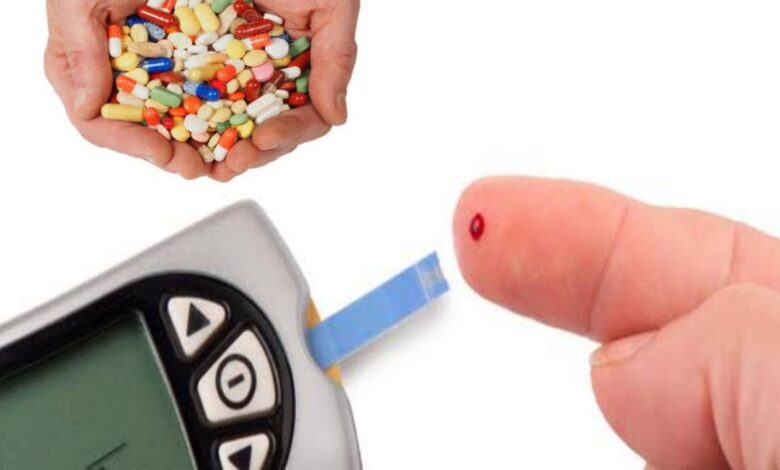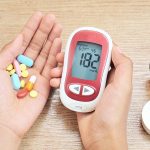Antidiabetics: Uses, Side Effects, List, Safety

Diabetes is a chronic condition that affects the way your body regulates blood sugar, also known as glucose. There are several types of diabetes, but the most common ones are type 1 diabetes, type 2 diabetes, and gestational diabetes.
1. Type 1 diabetes: This type of diabetes is an autoimmune disease where the body’s immune system mistakenly attacks and destroys the insulin-producing cells in the pancreas. As a result, people with type 1 diabetes require lifelong insulin therapy to control their blood sugar levels. It is usually diagnosed in children and young adults.
2. Type 2 diabetes: This type of diabetes occurs when the body becomes resistant to insulin or does not produce enough insulin to regulate blood sugar effectively. It is often associated with lifestyle factors such as obesity, sedentary lifestyle, and poor diet. Type 2 diabetes can be managed with lifestyle modifications, oral medications, and sometimes insulin injections.
3. Gestational diabetes: This type of diabetes occurs during pregnancy and usually resolves after childbirth. However, women who have had gestational diabetes have a higher risk of developing type 2 diabetes later in life. Gestational diabetes requires careful monitoring of blood sugar levels and may involve dietary changes, physical activity, and in some cases, insulin therapy.
Antidiabetic Drugs are medications used to treat diabetes mellitus by altering the glucose level in the blood. With the exceptions of insulin, exenatide, liraglutide, and pramlintide, all are administered orally and are thus also called oral hypoglycemic agents or oral antihyperglycemic agents. There are different classes of anti-diabetic drugs, and their selection depends on the nature of diabetes, age and situation of the person, as well as other factors.
How do antidiabetic drugs work?
Antidiabetic drugs work through various mechanisms to help control blood sugar levels. The specific action of each drug depends on its classification and the type of diabetes being treated. Here are some common types of antidiabetic drugs and how they work:
1. Insulin: Insulin is a hormone naturally produced by the pancreas that helps regulate blood sugar levels. In people with type 1 diabetes or advanced type 2 diabetes, the body either doesn’t produce enough insulin or becomes resistant to its effects. Insulin therapy involves injecting insulin to compensate for the deficiency. Insulin allows glucose from the bloodstream to enter cells, where it is used for energy or stored for future use.
2. Metformin: Metformin is a widely prescribed oral medication for type 2 diabetes. It belongs to the class of drugs known as biguanides. Metformin primarily works by reducing the production of glucose by the liver. It also improves insulin sensitivity, making the body’s cells more responsive to insulin. Additionally, metformin may reduce the absorption of glucose from the intestines.
3. Sulfonylureas: Sulfonylureas are a class of oral medications that stimulate the pancreas to release more insulin. They work by binding to specific receptors on beta cells in the pancreas, which leads to increased insulin secretion. Sulfonylureas are typically prescribed for people with type 2 diabetes and are most effective when there is still some remaining insulin production.
4. Thiazolidinediones (TZDs): TZDs, such as pioglitazone and rosiglitazone, improve insulin sensitivity in the body’s tissues, especially muscle, fat, and liver cells. They activate peroxisome proliferator-activated receptor-gamma (PPAR-gamma), a nuclear receptor that regulates genes involved in glucose and lipid metabolism. By enhancing insulin sensitivity, TZDs help improve glucose uptake by cells and decrease glucose production in the liver.
5. Dipeptidyl peptidase-4 (DPP-4) inhibitors: DPP-4 inhibitors, including sitagliptin and saxagliptin, work by inhibiting the enzyme DPP-4. This enzyme breaks down incretin hormones such as GLP-1 (glucagon-like peptide-1), which stimulate insulin release and reduce glucagon secretion. By inhibiting DPP-4, these medications increase the levels of incretin hormones, resulting in increased insulin production and decreased glucagon release.
6. Sodium-glucose co-transporter 2 (SGLT2) inhibitors: SGLT2 inhibitors, such as empagliflozin and dapagliflozin, reduce blood glucose levels by blocking the reabsorption of glucose in the kidneys. They work by inhibiting SGLT2, a protein responsible for reabsorbing glucose from the kidney tubules back into the bloodstream. As a result, excess glucose is excreted in the urine, leading to lower blood sugar levels.
It’s important to note that these are just a few examples of antidiabetic drugs, and there are several other classes and individual medications available. The choice of medication depends on factors such as the type and severity of diabetes, the patient’s overall health, and individual treatment goals.
Safety of Antidiabetics
Diabetes medications are not frequently associated with serious adverse events or major drug interactions. But that doesn’t mean there aren’t concerns to be addressed when treating diabetic patients to help ensure safe and effective therapies.
Probably the biggest concern with drug interactions or adverse events in diabetic patients is the potential for loss of glucose control (hypoglycemia/hyperglycemia). Hypoglycemia is a potentially serious concern in diabetic patients, especially those receiving multiple antidiabetic agents. Patients receiving insulin or insulin secretagogues (e.g., sulfonylureas, meglitinides) are at greatest risk.
Close glucose monitoring is essential in preventing loss of glucose control. Dosage adjustments of antidiabetic therapy may be necessary during concurrent use with the following drugs:
Hypoglycemia risk:
- Insulin or insulin secretagogues (e.g., sulfonylureas, meglitinides)
- Mecasermin
- Quinine
- Sulfamethoxazole/trimethoprim
- Sunitinib
- Somatostatin analogues
Hyperglycemia risk:
- Antipsychotics
- Corticosteroids
- Diuretics
- Estrogens
- Protease inhibitors
- Somatostatin analogues
In addition, Sulfonylureas can cause many harmful side effects, such as low blood sugar and heart problems. After years of uncertainty, there is growing evidence that patients taking sulfonylureas are more likely to have a heart attack or die from heart issues than other diabetes patients on metformin alone. Some types of sulfonylureas have more side effects than others, however, For example, patients taking Diabeta are more likely to die than patients taking other sulfonylureas.
How To Make Diabetes Drugs More Effective
To make diabetes drugs more effective, it’s essential to combine them with healthy lifestyle practices. Here are some strategies to enhance the effectiveness of diabetes drugs:
1. Follow medication instructions: Take your diabetes medications as prescribed by your healthcare provider. Follow the recommended dosage and timing to ensure optimal effectiveness.
2. Maintain a healthy lifestyle: Medications work best when combined with healthy habits. Focus on a balanced diet, regular physical activity, and stress management. These lifestyle changes can help improve blood sugar control and reduce the reliance on medications.
3. Monitor blood sugar levels: Regularly monitor your blood sugar levels to understand how your body responds to the medications. This information will help you and your healthcare provider make any necessary adjustments to your medication regimen.
4. Communicate with your healthcare provider: Keep open lines of communication with your healthcare provider. Discuss any concerns or issues you may have regarding your medications. They can provide guidance and make adjustments if necessary.
5. Adhere to your treatment plan: Consistency is crucial for the effectiveness of diabetes medications. Take your medications as prescribed and follow the recommended lifestyle modifications consistently.
6. Educate yourself: Learn about diabetes and how your medications work. Understand the potential side effects and interactions with other medications or supplements. Being well-informed empowers you to make better decisions and manage your diabetes effectively.
7. Regularly visit your healthcare provider: Schedule regular check-ups with your healthcare provider to monitor your progress and make any necessary adjustments to your treatment plan.
Remember, individual responses to medications may vary, so it’s essential to work closely with your healthcare provider to find the most effective treatment plan for your specific needs.




